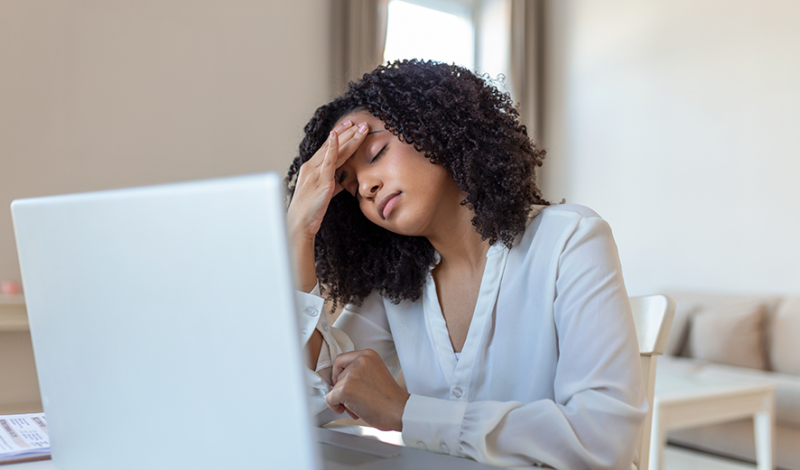Headaches
The World Health Organization (WHO) reports that almost half of all adults worldwide will experience a headache in any given year with headaches being one of the most common health complaints in the world. In the Global Burden of Disease Study 2017, headache disorders were the second most prevalent condition worldwide, as well as the second highest cause of years lost due to disability (YLD). YLD are the number of years with a lower quality of life due to the disease.
Types of headaches
There are four categories of primary headaches (headaches not associated with an underlying condition):
- Migraines
- Tension-type
- Trigeminal autonomic cephalgias (e.g cluster headaches)
- Other, such as a cold-stimulus headache.
In the UK, migraine headache occurs in 15% of the adult population, with around 200,000 individual episodes estimated every day, resulting in high levels of disability and work absence, as well as having a significant impact on the wider economy. Episodic tension-type headaches affect 80% of people at some point in their life and are chronic (having more days with a headache than without one) in up to 3% of the population. Medication-overuse headache is the third most common cause of headache, affecting up to 2% of adults.
(RCC, 2020)
What causes headaches
There are many different causes of headaches, but commonly, headaches are due to overactivity or problems with pain-sensitive structures. Pain sensitive structures in the neck and skull or brain such as joints, nerves and muscles can all play a role in headache production.
Sometimes we use the word “trigger” when talking about headaches, these are external factors that may produce headaches, such as:
- Alcohol
- Certain foods, for example cheese
- Lack of sleep
- Excessive stress
- Exercise
- Hormonal changes (this is an internal factor that may contribute to headaches in some individuals)
(CCA, 2016)
If your headache pattern changes, or if your headaches are getting worse or you have a new type of headache it is recommended to seek medical attention.
Preventative treatment of Headaches
There are many ways that people find relief from headaches, each headache is individual and therefore it is necessary to find something that works for you.
If you find your headaches are brought on by high periods of stress, then it may be worth considering meditation as part of your daily routine. Studies have also shown that Vitamin B can be used to help reduce stress levels.
If your headaches seem to be coming from muscle tension, posture, or stiffness in the neck then it is possible to see a chiropractor, massage therapist or similar may help towards a reduction in frequency or severity.
Cutting out known “triggers” will also help reduce headache intensity and severity although the most difficult part is trying to figure out what your individual triggers are. A headache diary will be useful in monitoring the 24-48 hours leading up to an episode, noting down food, drink, and other external factors such as sleep pattern or new activities.
At Skelian we offer chiropractic, sports massage and specialist physiotherapy services at our clinic based in Cheltenham.
If you would like to book in for an appointment please call 01242 254000 or you can book an initial consultation online if you have not been to see us before https://skelian.janeapp.co.uk/
References (in order of appearance):
Royal College of Chiropractors, 2020., Chiropractic Quality Standards, Headache., https://rcc-uk.org/wp-content/uploads/2020/05/Headache-Quality-Standard-Web.pdf
Canadian Chiropractic Association, 2016., How chiropractic care can help frequent headaches., https://chiropractic.ca/blog/how-chiropractic-care-can-help-frequent-headaches/
Stough C, Scholey A, Lloyd J, Spong J, Myers S, Downey LA. The effect of 90 day administration of a high dose vitamin B-complex on work stress. Hum Psychopharmacol. 2011 Oct;26(7):470-6. doi: 10.1002/hup.1229. Epub 2011 Sep 8. PMID: 21905094.
Bryans R, Descarreaux M, Duranleau M, Marcoux H, Potter B, Ruegg R, Shaw L, Watkin R, White E. Evidence-based guidelines for the chiropractic treatment of adults with headache. J Manipulative Physiol Ther. 2011 Jun;34(5):274-89. doi: 10.1016/j.jmpt.2011.04.008. PMID: 21640251.
Links
https://www.instagram.com/skelian_chiropractic/
https://www.facebook.com/skelianclinic/
https://www.youtube.com/channel/UCCJ9BXYUAAfOie7zTUUeIKA/videos





